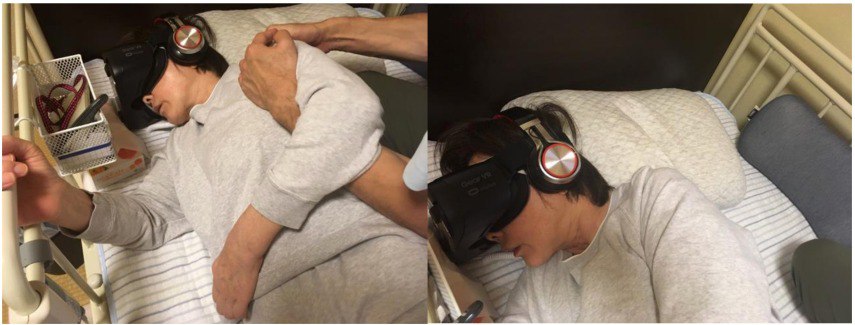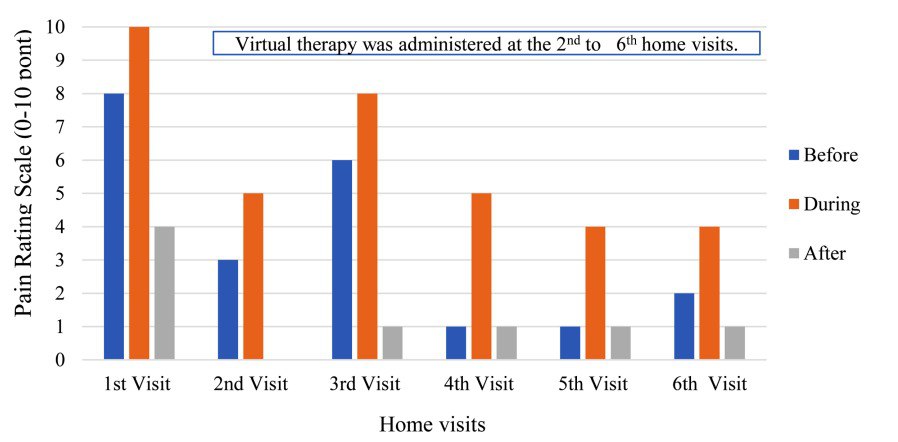The article "Virtual reality applied to home-visit rehabilitation for hemiplegic shoulder pain in a stroke patient: a case report" by Hiroki Funao, published in 2021, describes the successful application of virtual reality in the rehabilitation of a patient experiencing hemiplegic shoulder pain after suffering a stroke.

Virtual Reality Application
The patient in question was a 63-year-old woman who had suffered a stroke six months ago and was experiencing hemiplegic shoulder pain, which prevented her from performing daily activities. The patient received treatment at a hospital for three months, but her pain did not improve significantly. After being discharged, she was advised to continue with home rehabilitation.
VR as a treatment
It was then that the researchers decided to apply virtual reality as part of his treatment . The team used virtual reality software that included relaxing images in natural settings and designed a customized rehabilitation program for the patient. The program included physiotherapist-assisted passive mobilizations designed to improve the mobility and strength of the affected shoulder. In the 6-session program (2 per week for 3 weeks), virtual reality was used in sessions 2 and 6.
After three weeks of treatment, the patient reported a significant decrease in hemiplegic shoulder pain, with a much greater improvement during session 2 and 6 (with VR), as well as improved mobility and strength. He also reported feeling more motivated and committed to his rehabilitation program.

Conclusions
The researchers concluded that virtual reality can be an effective tool in the rehabilitation of patients with hemiplegic shoulder pain after stroke. In addition, they noted that virtual reality may be especially useful in home rehabilitation, as it allows patients to perform exercises more conveniently and autonomously.
This study highlights the potential of virtual reality technology to improve rehabilitation and quality of life for patients with physical disabilities. Virtual reality can provide a more engaging and motivating rehabilitation experience, and can enable patients to exercise more safely and effectively.
In addition, the results of this study suggest thatvirtual reality may be a useful tool in the treatment of chronic pain. Chronic pain is a common and debilitating problem that affects millions of people worldwide, and virtual reality may be a safe and noninvasive alternative to conventional treatments.